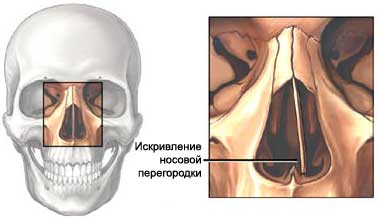Rhinoplasty – Plastic surgery of the nose
Description Rhinoplasty
Rhinoplasty – operation, allowing to change the size and shape of the nose.
Reasons for Rhinoplasty
- It allows you to change or improve the appearance of the nose;
- To improve breathing;
- That Fix damage or congenital deformities;
- Together it can be made septoplasty, to open blocked nasal passages due to the curvature of the nasal septum.

Possible complications of rhinoplasty
Complications are rare, but the procedure does not guarantee the absence of risk. If you are planning a rhinoplasty, you need to know about possible complications, which may include:
- Poor healing of the skin of the nose;
- Unsatisfactory cosmetic outcome;
- Increased risk of nosebleeds;
- Infection;
- Reaction to anesthesia;
- Puncture of septum or damage to the nose (relatively seldom).
Factors, that may increase the risk of complications:
- Smoking;
- Age: recommended age operation – by podrostokovogo until middle age;
- Previous nose surgery;
- Previous nose injury;
- Health Concerns.
How is rhinoplasty?
Preparation for the procedure
You may be asked to describe the desired shape of the nose. You can also get a photo album forms a nose, from which you can select the desired.
The doctor appointed the following:
- Blood tests;
- Urine;
- X-rays of the facial bones;
- It may also be necessary ECG and chest X-ray;
- Performs photos nose before surgery;
In the run-up procedure:
- We need to organize a trip for the operation and back home from the hospital;
- If using general anesthesia, Do not eat or drink anything, at least 8 hours before the procedure.
Tell your doctor about taking any medications. A week before surgery, perhaps, you need to stop taking certain drugs:
- Aspirin or other anti-inflammatory drugs;
- Blood thinners, such as clopidogrel (Plaviks) or warfarin;
- Ginkgo biloba and other supplements.
Anesthesia
If you change the shape of the nose may include the following types of anesthesia:
- General anesthesia – blocks pain and the patient support in a sleep state during operation. Administered intravenously in the arm or hand;
- Local anesthesia – anaesthetises surgery area, during surgery, the patient is awake. It is used as an injection. It may be provided together with the sedative.
Procedure Rhinoplasty
Rhinoplasty is divided into three main components:
Branch of the skin of the nose bone and cartilage
The nose will be introduced analgesic and adrenaline. Adrenaline helps prevent excessive bleeding. The cut will be made either inside the nostril or nostrils, over the crest between the nostrils. With the cartilage of the nose skin removed.
Remodeling of bone and cartilage of the nose
Depending on the desired result, some parts of the nasal bone may be removed, broken, and given them a new form. The cartilage can be trimmed.
Other methods include the installation of tissue transplants (bones, cartilages, or mucosa) from the patient or a donor or a synthetic graft use. They will be used, to help change the shape of the nose. So, eg, tip of the nose may be narrowed or raised, the slope of the nose can be reduced or increased. It can be changed the shape and size of the nostrils.
Closure nose wheel
After completion of the remodeling of the cuts will be sewn. The skin is placed on the new bone. The skin is tightly pressed, to hold it in place. On the outer side of the nose of the tire mounted a protective metal. This will help keep the position of the nose during the healing. As a nasal swabs used either soft plastic, or bandage, covered with Vaseline. They may also be inserted into the nostrils to preserve their shape during healing.
How long will the rhinoplasty?
About 2-4 o'clock.
Rhinoplasty – Will it hurt?
Anesthesia prevents pain during surgery. Some pain may be felt for 1-4 weeks after surgery. It will be given pain medicine, to reduce the pain.
The average hospital stay after rhinoplasty
You can usually go home the same day, some time after the operation.
Care after removal Rhinoplasty
To ensure proper recovery:
- During the first few days after surgery, rest in bed with your head elevated, to reduce swelling;
- Apply ice on the nose in the first two days after surgery. This will help relieve discomfort;
- Take pain medicine as directed by a doctor;
- During the first week after the operation it is impossible to sneeze. You can not blow your nose for a month;
- Protect your nose from injury for eight weeks. Do not wear glasses. Be careful when washing;
- Ask the doctor, when it is safe to shower, bathe;
- Avoid intensive loads, at least three weeks. Avoid contact sports for six months;
- Be sure to follow your doctor's instructions.
The stitches will be removed in a week. Nasal swabs are deleted 1-2 day. The tire should remain in place for 1-2 weeks or longer. You can expect stiff, edema, bruising in the area of operations, and around the eyes. Swelling and bruising in the first few days after surgery may increase, but this is a temporary phenomenon. It may be a small nosebleed, headache, a feeling of nasal congestion. After reducing the swelling and bruising, recovery will come through 3-4 of the week.
Contact your doctor after rhinoplasty
After discharge from the hospital need to see a doctor, If the following symptoms:
- Signs of infection, including fever and chills;
- Persistent rise in temperature;
- Redness, edema, strong pain, bleeding or discharge from the incision;
- Pain, which does not pass after taking pain medication appointed;
- Cough, breathlessness, chest pain, or severe nausea or vomiting;
- Other painful symptoms.
